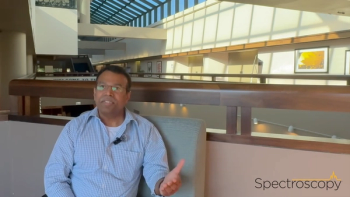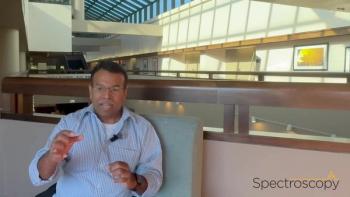
Quantifying the Vibrational Stark Effect
In this exclusive interview, Nishadi Nadeeshani Moragoda Liyanage, a graduate student at The Ohio State University, outlines how the results of her study help advance our understanding of plasmon-induced electron transfer and its applications in nanoscale optoelectronic and catalytic systems.
Yesterday, Nishadi Nadeeshani Moragoda Liyanage, a graduate student at The Ohio State University, delivered a presentation titled, “Electron Transfer Mediated by Plasmons: Studying Nanosphere Size Contributions via Vibrational Stark Effect” (1). In her talk, Liyanage discussed her investigation into how nanosphere size affects the vibrational Stark effect (VSE) in plasmonic systems using surface-enhanced Raman spectroscopy (SERS) within a nanoparticle-on-mirror (NPoM) geometry (1).
In her study, gold nanospheres ranging from 30 to 100 nm were synthesized and characterized by dynamic light scattering (DLS), nanoparticle tracking analysis (NTA), and scanning electron microscopy (SEM), then deposited onto a gold film functionalized with a monolayer of mercaptobenzonitrile (MBN). Frequency shifts in the nitrile (C≡N), C=C, and aromatic (C–H) vibrational modes of MBN were analyzed to assess the influence of local electric fields generated by single nanoparticles. Correlating SEM imaging with Raman mapping confirmed single-particle behavior, avoiding interparticle effects. Results showed that smaller nanospheres (32 ± 4 nm) produced larger VSE-induced shifts—up to ~100 cm⁻¹—than larger nanospheres (84 ± 8 nm), indicating stronger local electric fields and enhanced electron charging effects in smaller plasmonic junctions. These findings highlight how nanosphere size modulates plasmon-induced electric fields and demonstrate the potential of VSE as a quantitative probe for understanding electron transfer dynamics in nanoscale plasmonic systems.
Spectroscopy sat down with Liyanage to discuss the research that she presented in her talk. She outlines how the results of her study help advance our understanding of plasmon-induced electron transfer and its applications in nanoscale optoelectronic and catalytic systems. She also explains how quantifying the vibrational Stark effect can be improved, highlighting the analytical techniques that can minimize contributions from interparticle coupling and isolate single-particle effects.
This interview clip is part of our coverage of the 2025 SciX Conference. To stay up to date with the latest coverage of the conference, click
Reference
- SciX Conference, Electron Transfer Mediated by Plasmons: Studying Nanosphere Size Contributions via Vibrational Stark Effect. SciX Conference. Available at:
https://scixconference.org/2025-final-program (accessed 2025-10-08).
Newsletter
Get essential updates on the latest spectroscopy technologies, regulatory standards, and best practices—subscribe today to Spectroscopy.





